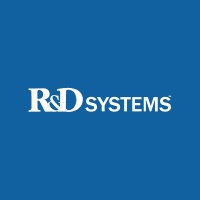LDL Receptor Monoclonal / Alexa Fluor 405 / 472413
Product Details
| Description | Human LDLR Alexa Fluor 405-conjugated Antibody | |
|---|---|---|
| Conjugate | Alexa Fluor 405 | |
| Clone | 472413 | |
| Target Species | Human | |
| Applications | FC | |
| Supplier | R&D Systems | |
| Catalog # | Sign in to view product details, citations, and spectra | |
| Size | ||
| Price | ||
| Antigen | ||
| Host | ||
| Isotype |
About LDL Receptor
The low density lipoprotein receptor (LDLR) gene family consists of cell surface proteins involved in receptor-mediated endocytosis of specific ligands. Low density lipoprotein (LDL) is normally bound at the cell membrane and taken into the cell ending up in lysosomes where the protein is degraded and the cholesterol is made available for repression of microsomal enzyme 3-hydroxy-3-methylglutaryl coenzyme A (HMG CoA) reductase, the rate-limiting step in cholesterol synthesis. At the same time, a reciprocal stimulation of cholesterol ester synthesis takes place. Mutations in this gene cause the autosomal dominant disorder, familial hypercholesterolemia. Alternate splicing results in multiple transcript variants.[provided by RefSeq, Sep 2010]
The low density lipoprotein receptor (LDLR) gene family consists of cell surface proteins involved in receptor-mediated endocytosis of specific ligands. Low density lipoprotein (LDL) is normally bound at the cell membrane and taken into the cell ending up in lysosomes where the protein is degraded and the cholesterol is made available for repression of microsomal enzyme 3-hydroxy-3-methylglutaryl coenzyme A (HMG CoA) reductase, the rate-limiting step in cholesterol synthesis. At the same time, a reciprocal stimulation of cholesterol ester synthesis takes place. Mutations in this gene cause the autosomal dominant disorder, familial hypercholesterolemia. Alternate splicing results in multiple transcript variants.[provided by RefSeq, Sep 2010]
About Alexa Fluor 405
Alexa Fluor™ 405 (AF405, Alexa 405) has an excitation peak at 401 nm and an emission peak at 421 nm and is similar in size, brightness and application to V450 (BD Biosciences), Vio®Blue® (Miltenyi Biotec), Cascade Blue® (ThermoFisher Scientific), Pacific Blue® (ThermoFisher Scientific). Alexa 405 is most commonly used in flow cytometery, and fluorescence microscopy applications.
Alexa Fluor™ 405 (AF405, Alexa 405) has an excitation peak at 401 nm and an emission peak at 421 nm and is similar in size, brightness and application to V450 (BD Biosciences), Vio®Blue® (Miltenyi Biotec), Cascade Blue® (ThermoFisher Scientific), Pacific Blue® (ThermoFisher Scientific). Alexa 405 is most commonly used in flow cytometery, and fluorescence microscopy applications.
Experiment Design Tools
Panel Builders
Looking to design a Microscopy or Flow Cytometry experiment?
Validation References
Reviews & Ratings
| Reviews |
|---|
Looking for more options?
625 LDL Receptor antibodies from over 23 suppliers available with over 64 conjugates.





